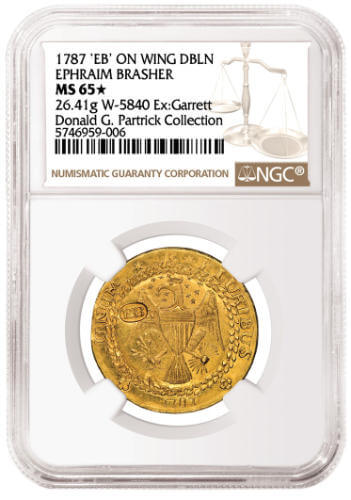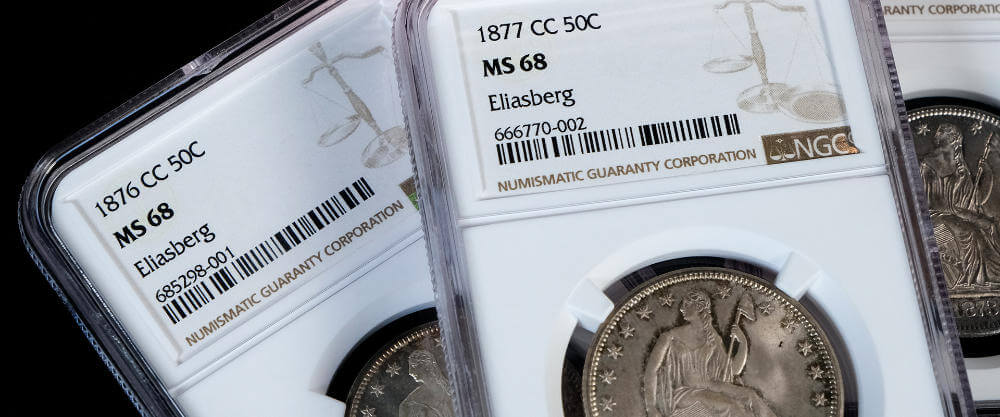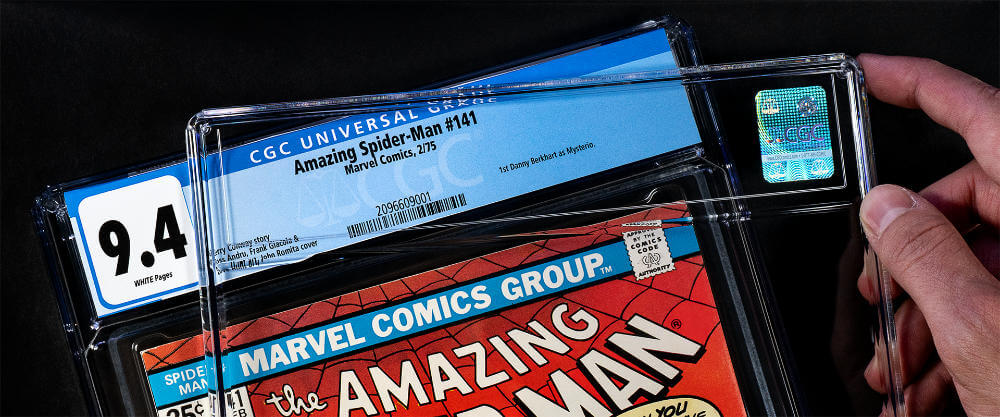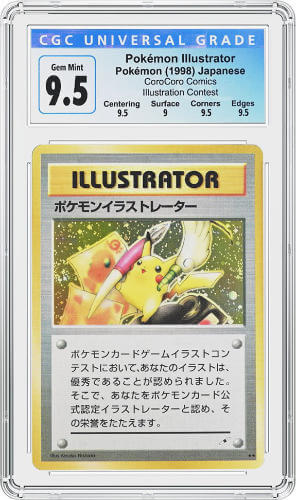The Certified Collectibles Group: More than Coins and Comic Books
by Ursula Kampmann, translated by Maike Meßmann
It was almost a shock when we pulled up the car in CCG’s own car park. I had last visited the Sarasota headquarters in January 2018. Even then, I was impressed by the large offices. But all these cars that were now in this huge car park… It just did not fit in with the picture that I still had of 2018.
Content
Max Spiegel laughed when I confessed how surprised I was: “The Certified Collectibles Group has grown tremendously over the last few years, partly due to the money Blackstone provided us with to invest in the expansion of our facilities. You won’t recognise the company. Before Covid, we had about 270 employees. Now we are close to 800, with 670 of them working here in Sarasota and the rest in our other locations.”
At first I thought that I had misunderstood my companion when she talked about taking the car to see everything. But I was quickly proven wrong. The Certified Collectibles Group is no longer the one Sarasota building that I knew from 2018. By now, there are five buildings, and soon there will be even more. I remembered the individual companies having their own halls. Now they have their own buildings.
And this is necessary: while more than 75 million collectibles were graded throughout the company’s history – which dates back to 1987 –, more than 10 million of them were graded in 2022 alone. This would not have been possible if – as Mark Salzberg put it in a letter to their customers on 16 January 2023 – Blackstone had not invested “tens of millions of dollars to develop state-of-the-art AI capabilities, best-in-class operations, a new internal technology system and more”.
More than Coins in Plastic
But let us start with some general remarks about the idea behind this large grading institute. CCG is short for Certified Collectibles Group. All companies that are grouped together under this umbrella (or rather almost all of them), act as independent authorities that examine the authenticity of collectibles and assesses their quality. In this way, the Certified Collectibles Group assumes a task that is usually performed by dealers or experienced collectors in the traditional collectibles trade. But since the traditional collectors’ market, where the price of an object is merely determined by its value to collectors, has turned into an investors’ market since the 1970s – especially in the US and Asia – many inexperienced buyers are entering the market. They want to quickly invest large sums of money without first spending time and money on acquiring the required expertise. Those who want to diversify part of their investment portfolio by purchasing collectibles are not patient enough to intensely study every single field that might be worth collecting. Therefore, they have to pay for this expertise – and that is exactly what the Certified Collectibles Group offers.
CCG revolutionised the international collectibles trade, especially online. While traditional customers knew their dealers and trusted them, the market now consists of people that do not know anything about the integrity of the seller. Third-party grading helps them assess the collectible they want to buy – and this does not only regard coins.
Besides NGC, the Numismatic Guaranty Company, there is PMG (Paper Money Guaranty) for banknotes, CGC (Certified Guaranty Company) for pop culture objects such as comic books, trading cards, video games and much more, CSG (Certified Sports Guaranty) for sports cards, ASG (Authenticated Stamp Guaranty) for stamps and CAG (Collectibles Authentication Guaranty) for all kinds of memorabilia.
In addition, the Certified Collectibles Group also has two firms that exclusively offer professional conservation services. NCS (Numismatic Conservation Services) specialises in coins, while CCS (Classic Collectible Services) deals with the restoration of comic books.
Although all these services operate independently, all the departments benefit from one another. Thanks to the know-how and the systematic approach developed over decades in the field of coins and comic books, the Certified Collectibles Group was able to quickly adapt to the new market that is currently evolving in the field of video games. Those who buy an unopened, originally packaged version of a computer game such as “Super Mario Bros.” from 1985 for 2 million US dollars, certainly want to make sure that the plastic box actually contains this very game. The Certified Guaranty Company has developed several verification procedures to ensure this. Their grading scale assesses a game’s condition from 1 to 10 and also gives a score for the quality of the seal that locks the video game. The 10-point scale was inspired by the scale CGC developed for comic books. And – in case you have not seen it yet – NGCX is also trying to establish this 10-point scale in the numismatic world.
Consistency and Expertise
Let us take a look into the hall where the coins are graded. Believe me, this is hard work. More than 30 full-time employees sit in lightless rooms that are illuminated by the occasional desk lamp. There is exactly one lamp on each desk, and ever since NGC was founded, this lamp type has been the same to make sure that the lighting never changes. Hardly any talking takes place during the process. Everyone is highly focused. Even though the experts’ work is now assisted by AI, the first basic question – is the piece undoubtedly genuine or do I need to look closer? – still has to be answered by the human eye.
NGC is proud of the expertise that has been developed in-house. But they also consider it important to collaborate with experts around the globe. Scott Schechter explains: “Of course, we have state-of-the-art tools here to identify counterfeits. And once you have seen as many specimens of a certain coin type as we have, you develop a sixth sense that tells you that a certain piece is somehow different. After all, every day about 1,200 to 1,300 coins are graded by us. However, there will always be areas where we have to do additional research, and if there’s any doubt, we contact our external specialists.”
Identifying coins, on the other hand, is not a focal point of their work. Scott Schechter tells us: “So many different books are being used in various countries. We try to give the standard reference of a coin. You can find out on our website what that reference is.”
Something Completely Different from Coins!
While numismatics is an established discipline with entire libraries published on its collectibles, there is not a lot of literature about new fields. The different companies of the Certified Collectibles Group are doing pioneering work by making their data available to collectors. Take, for example, the comparably new field of gaming cards. CGC has been grading gaming cards since 2020, between 5,000 and 6,000 a day! That is about four times as many gaming cards as coins.
If you are wondering what this refers to, the cards are mostly from Pokémon, Yu-Gi-Oh! and Magic: The Gathering. And if you still do not know what this is about, let me tell you that Yu-Gi-Oh! is the best-selling card game in the world with 25.1 billion (!) cards sold to date. Regarding Pokémon, World Championships have been held annually since 2004 and CGC is proud to support its own Pokémon team. Magic: The Gathering is enjoyed by more than 35 million players and fans across the globe. The game contains over 20,000 different cards, which are now published in eleven languages including German, Russian, Korean, Japanese and Chinese. You see, this is no marginal phenomenon.
Gaming cards are a big topic among the youth. And if you wonder why your coin club does not have more members, accompany your grandson to a Pop Con. No, that is not something you can get in bags at the cinema. It is the cool equivalent to a coin show. You can go there in a costume, play games and buy collectibles – collectibles that are now also being traded in the four- and five-figure range.
It is important to the Certified Collectibles Group to make this new field transparent for collectors and investors to prepare it for the long run. And that is crucial. Many types of collectibles experienced a short boom in recent years only to disappear from the market in no time at all. Phonecards, for example. Or Swatch watches. As soon as gaming cards are no longer perceived as a current hype but as objectively assessable collectibles that are auctioned off by international auction houses and sold by specialised dealers, there is a much greater chance for these cards to become established collectibles in the future.
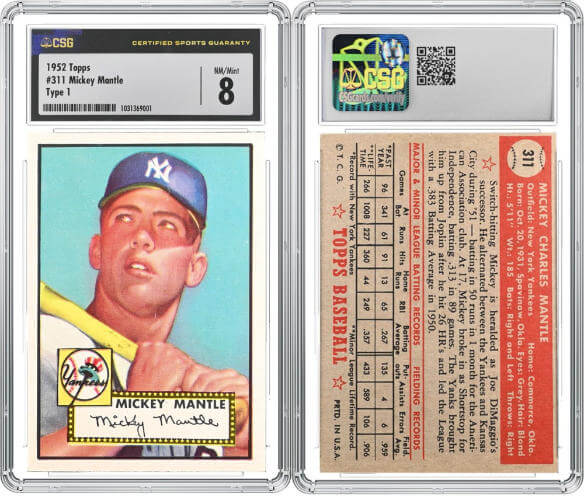
Baseball player Mickey Mantle was one of the most popular players in the 1950s and 1960s. A collector was willing to pay $ 1,253,185 for this sports card with his portrait. Photo: CCG.
Sports Cards
Let us take the example of the much-loved sports cards that are traded on school playgrounds across the globe. Basically, they are not that different from gaming cards, which is why both categories are often jointly referred to as trading cards. If you are wondering whether your panini sports cards from 1974 have become valuables by now, take a look at the population report. If you have Gerd Müller not from 1974 but from 1966, you might actually get something for it on eBay depending on the card’s condition, after all, it probably passed through many sticky children’s hands.
In the United States, sports cards have been collectibles already for about a century. At first, of course, baseball cards. And these are still by far the most popular cards in the US. However, European football is catching up. By now, soccer cards are already fifth in popularity among collectors, after baseball, American football, basketball and hockey.
The Next Big Thing
And, as Ashley Habedank of the Marketing Team told me, Certified Collectibles Group is already working on the next big thing. It is called Funko Pop and apparently the next big hit among young people. It is so new that there is not even a Wikipedia article on these collectible figures yet – even though entire walls of limited editions are apparently being sold at Comic Cons. (Wikipedia editors might be so old themselves by now that – just like me – they simply did not notice this new trend.)
And if you are turning up your nose, wondering what this has to do with classic coin collecting, I would like to remind you that the numismatic community is rather helpless when it comes to inspire the masses, both male and female, to collect coins. Perhaps we have distanced ourselves too far from the objects that actually appeal to young people today. Even though I certainly will not give up coin collecting for Funko Pop figures, I could well imagine that some elements of this lively pop culture could be adopted in the field of numismatics.
And who would I approach to help me out in such a case? Well, certainly the Certified Collectibles Group. After all, they easily manage the balancing act between the old and the new collecting world.







